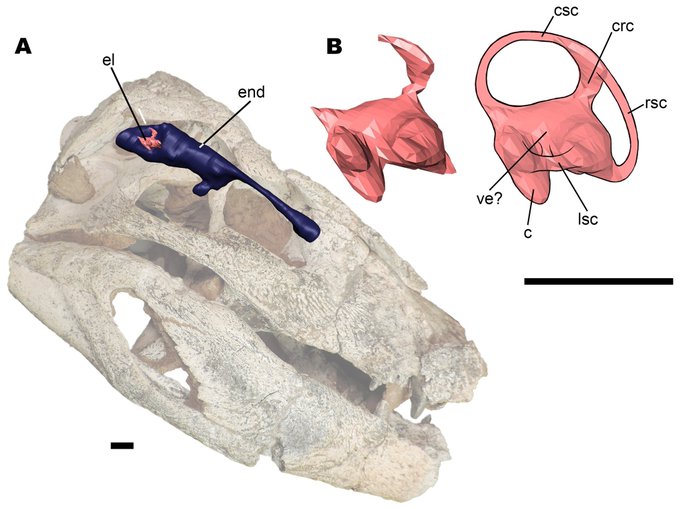The material consists of a partial cranium (mostly the back of the skull and the lower jaw), some vertebrae (cervicals, dorsals and isolated caudals), ribs, pectoral girdle and forelimb bones. It was also CT scanned, to make the assessment of internal parts easier.
For this #FossilFriday, let me introduce 𝑇𝑢𝑟𝑛𝑒𝑟𝑠𝑢𝑐ℎ𝑢𝑠 ℎ𝑖𝑛𝑔𝑙𝑒𝑦𝑎𝑒, a newly described thalattosuchian crocodylomorph, from the Pliensbachian of the UK!
Appreciate the amazing paleoart by @tupandactylus and follow the thread 👇🧵
Paper: https://t.co/0O1mo9mGD7
Great to see this out!
Darlim and colleagues describe in details the 3D cranial anatomy of a new species of baurusuchid from the Cretaceous of Brazil. https://t.co/sgf58bvnhE
Fernandez Dumont et al. (2020) describe new specimens of the notosuchian Araripesuchus buitreraensis, from Argentinian Patagonia, revealing new morphological information. https://t.co/zJWyW5sCNt
More evidence for terrestriality in baurusuchids. Great to see notosuchian endocast/endocranial morphology being more explored!
Fonseca et al. (2020) Morphology of the endocranial cavities of Campinasuchus dinizi from the Upper Cretaceous of Brazil https://t.co/8u49zcU1ep
Two new croc papers out today! Revisions of the tethysuchian Sarcosuchus hartii and the caimanine Necrosuchus ionensis. Great work from Brazilian researchers @makesciencebr and @giovannemendes!
https://t.co/RvviyENg9V
https://t.co/fFRHJq4N1q
Great resource on dinosaur origins written by my friend Júlio Marsola and former boss Max Langer. An excellent and up-to-date summary on the subject.
https://t.co/Crk9ZUP48r





















